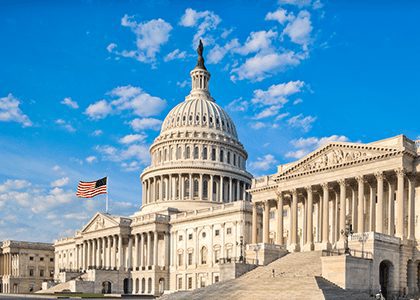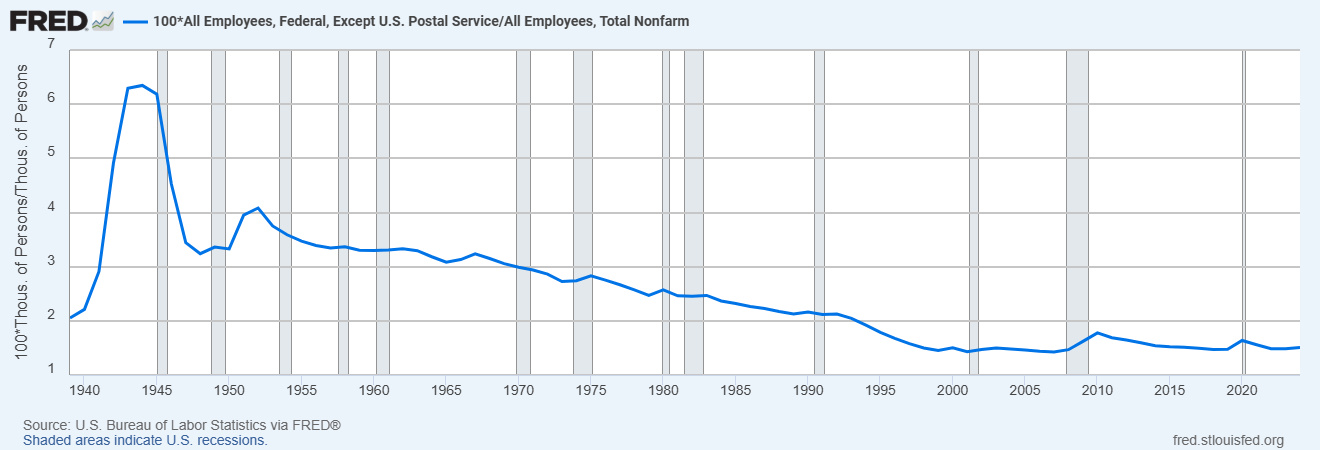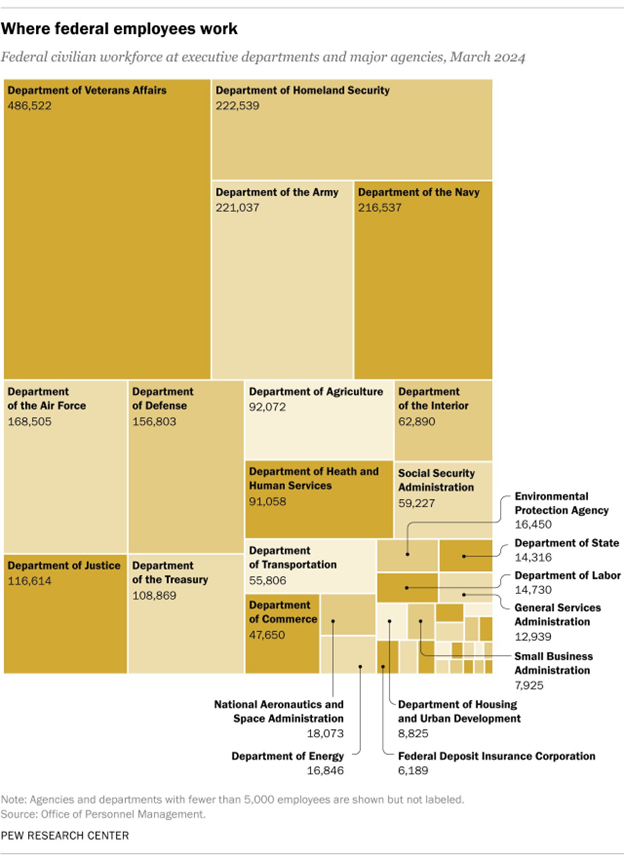There’s been a lot of chatter about cutbacks in federal government employment, including “buyout offers” (apparently even at the CIA). The deadline for accepting the buyout is February 6th, and reports suggest anywhere from 20,000-40,000 workers have accepted the offer.
Irrespective of how you think about it (good, bad, ugly, or apocalyptic), there’s been some fear that this could be a big blow to the labor market. At the same time, there’s also been some wild suggestions about how many employees can be cut from the federal workforce. I thought it’d be useful to try to put some context around this and ground it with actual data.
Federal government payrolls are close to historical lows (as a percent of the workforce)
Overall non-farm employment is just under 160 million, as of December 2024, and it’s risen almost 5% over the last five years. Meanwhile, federal government payrolls are about 3.0 million and rose just under 6% over the same period. Of the 3.0 million people on federal government payroll, about 600,000 are US Postal Service workers. In contrast, state and local government payrolls are just over 20 million.
The relative percent increase in federal government jobs over the last year was slightly higher than total payrolls, but federal government payrolls (excluding USPS workers) are still just 1.5% of total employment. Federal payrolls have risen over time, but you’d expect that with population growth (and overall payroll growth). But the current proportion of federal government workers is historically low. In fact, it’s been steadily falling over the last several decades:
- 1940s: 4.3%
- 1950s: 3.6%
- 1960s: 3.2%
- 1970s: 2.8%
- 1980s: 2.3%
- 1990s: 1.8%
- 2000s: 1.5%
- 2010s: 1.6%
- 2020s: 1.5 %
Of course, the federal government does a lot more now than it did several decades ago, and if anything, you’d think it’s actually gotten more efficient, i.e. has been delivering more services with fewer workers as a percent of total employment. I’m not denying at all that there are inefficiencies in the federal workforce. Only that, like the private sector, efficiency has steadily improved overall.
It may also help to understand how jobs are distributed across the federal government. Just under half a million federal employees work in Veterans Affairs (VA), while another 600,000 work at the Department of Homeland Security, Department of the Army, and Department of the Navy. Add in the 225,000 at the Department of the Air Force and the Department of Defense, and that’s over half of Federal employment. There’s just not a lot left to cut after that.
Even if 50,000 Federal workers take the “buyout offer,” that’s just about 2% of Federal payrolls. I don’t know if that is what they expected, but it seems low. Here’s some perspective. Over each of the last three months (October – December 2024):
- 30,000 people were hired in the Federal government each month
- Of course, people also left (including quits and layoffs), to the tune of an average 28,000 each month
Technically, it also looks like workers who take the buyout offer will be “employed” through September. But Presidential advisor and government “efficiency czar” Elon Musk has said they don’t have to show up for work and can “just watch movies and chill, while receiving full government pay and benefits” . (By the way, this is not at all a recommendation to accept the buyout — we have no idea whether and how any of this will actually play out.)

Stay on Top of Market Trends
The Carson Investment Research newsletter offers up-to-date market news, analysis and insights. Subscribe today!
"*" indicates required fields
Irrespective of what happens, or does not happen, the turnover in federal government payrolls is going to be tiny compared to what’s happening in the overall labor market. Again, here’s some more perspective on the dynamics of the overall US labor market:
- An average of 5.41 million people were hired across the US economy in each month of the last quarter (Q4)
- An average of 3.20 million workers quit their jobs in each month of Q4
- An average of 1.77 million people were laid off in each month of Q4
These are staggeringly large numbers compared to what we’re talking about when discussing federal government employment. Even if the Trump administration lays off everyone outside VA and defense-related areas, which would be about 1.2 million workers, that’s a fraction of the normal turnover we typically see every year (let alone every month) in the US labor market, let alone as a proportion of the overall labor force. There may be other issues, especially related to social security administration, Medicare, trade, and even economic data collection (to name just a few), but that’s a topic for another day.
This is just to give you some perspective when you see headlines about government jobs. For perspective on the recent tariff news, and potential market implications, tune into our latest Facts vs Feeling episode where Ryan and I discussed all that and more.
For more content by Sonu Varghese, VP, Global Macro Strategist click here.
7611368-0225-A




